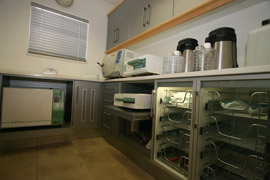Introduction to Oral Hygiene
Preventative Care
Prevention cuts down on time-consuming, financially debilitating procedures and optimizes the longevity of existing dentistry.
This service is supported by our hygienists who expertly and enthusiastically perform a task that demands care and time.
We urge our patients to come in for regular examinations and hygiene visits, and that they take correct care and responsibility of their teeth between these visits. There is nothing that we can do that can replace what patients don’t do for themselves !!! It’s the key to lasting success.
What is a dental hygienist ?
Dental Hygienists are highly trained professionals who are specialists in the field of preventative dental care. Dentists and hygienists work closely together in proactively preventing and controlling dental disease, and to establish and maintain a favourable oral environment to help ensure successful outcomes for past and future treatment.
What do dental hygienists do ?
Typically, hygienists will:
- Professionally clean your teeth so that you feel confident and healthy about your teeth and smile.
- Apply topical fluoride to your teeth to strengthen and re-mineralize weak areas before these teeth break down with decay.
- Apply agents to your gums and teeth to help reduce and control harmful bacterial activity.
- Monitor and screen for gum disease.
- Clean those areas of your mouth that are inaccessible to you, helping to prevent breakdown of these areas.
- Help in the prevention of cavities and gum disease.
- Advise and council patients on correct oral hygiene techniques and practices.
- Advise and council patients on good dietary and supplementary practices.
In addition, some hygienists have received advanced training in areas such as
administration of local anaesthesia and the treatment of some gum disorders.
What is a regular or “standard cleaning” ?
A regular cleaning is where only portions of the teeth above the gum are cleaned and is recommended for persons who do not have bone loss, periodontal disease, or infection around their teeth. There should also be no bleeding, mobility of teeth, receded areas where the gum has pulled away from the teeth, or gaps where the spaces around the roots are exposed. The mouth should be healthy with no gum or bone problems.
How often do I need to have my teeth cleaned ?
The old system of everyone having their teeth cleaned twice a year has fallen out of favour. Most dentists and hygienists are now setting up a patient’s cleaning schedule
based on individual needs. This may be as often as four times a year.
What is periodontal disease ?
Periodontal disease is very common but does not always have distinct symptoms. It is
an inflammation and infection of the supporting structure of the teeth, which includes
the gums, bone ligaments and root surfaces that can eventually result in loss of teeth.
You may notice that your gums bleed easily, that you have a bad taste in your mouth, that
your gums appear red and swollen, that your teeth appear longer or seem to have
shifted.........or you may notice nothing at all.
 What is a Root planing Procedure ? What is a Root planing Procedure ?
Patients with Periodontal disease may require root planing to remove diseased deposits from the roots of the teeth. Other treatment, including surgery, may be required. Root planing removes bacteria and their toxins, tartar and diseased deposits from the surfaces of tooth roots. Scaling (using dental instruments or an ultrasonic machine to remove deposits) is required for the full length of the root surface down to where the root, gum and bone meet
What is periodontal disease ?
After the disease process is under control, a regular “cleaning” is not always appropriate. Instead, you will require special ongoing gum and bone care procedures also known as periodontal maintenance, to keep your mouth healthy. Periodontal maintenance is different in scope from a “regular cleaning”, even though a hygienist may perform both services.
Periodontal maintenance can include a medical and dental history update, radiographic review, dentist exam and bone and periodontal probing, a review of homecare, scaling and root planing, polishing and irrigation of the gums as needed. Typically an interval of three months between appointments may be needed.
Will my medical aid pay for these procedures ?
Insurance/medical aids can help you pay for the treatment that you need, however, it was never designed to pay for everything. Most plans typically pay a minimum, regardless of what you may need as an individual.
It is a mistake to let medical aid benefits be your sole consideration when you make dental decisions.
|



